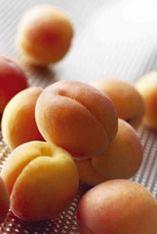
It has been a tricky period for stonefruit players in recent months as they have battled to secure volumes that reach the right standards before European supplies took off ahead of the UK season.
As the summer plays out, it is hoped that sunny spells will give the category a much needed boost in a competitive market as consumers choose between stonefruit and rival lines such as soft fruit and grapes.
The latest Kantar Worldpanel figures for the 52 weeks to
12 June show that value and volume have both risen, by 4.3 per cent and one per cent respectively. This has been fuelled by an average price increase of 3.2 per cent to £2.25 a kilo and shoppers buying into the category more often, with purchase frequency up by 1.9 per cent.
However, the early part of the northern hemisphere season is showing price deflation as more volume comes onto the market.
Cherries are putting in a strong performance, with value growth at 25.5 per cent. At the other end of the scale, plums and peaches are in decline, with peaches taking the biggest hit and value sliding by 8.7 per cent.
Tesco, Sainsbury’s and Morrisons are growing ahead of the market, while Waitrose and Marks & Spencer are enjoying strong value growth.
In fact, fierce competition has broken out among the major retailers as they go head to head on sales, make it known when they commit to home-grown supplies and put fruit on promotion.
But a shaky start on quality means that the sector will have to work harder to build sales.
Nick Wing, procurement manager for stonefruit at Univeg, warns that the sector must work to overcome the hurdles and admits that in the early part of the season, “volume growth in the market has outgrown value growth across all categories with the exception of peaches, probably because it has been the most disappointing in terms of eating quality”.
“Now we are in the main European season, plums, peaches and nectarines are generally in an oversupply situation,” he continues. “However, our approach here is not to capitalise on this by driving prices further into the ground, which will ultimately have an effect on quality, but to pay a fair return to our growers to ensure we receive the best varieties and best quality to allow our customers to offer their consumers real value for money.”
In fact, early fruit from the northern hemisphere has been hit by low temperatures and wet conditions, which have affected quality and brix levels in Morocco and the early production areas in Spain, Huelva and Seville.
“Normally, in similar circumstances we would switch to US stonefruit as an alternative supply source,” says Wing. “However, the start of this season was also delayed due to lower than normal temperatures and when fruit was ready, the level of brix was no better than the Spanish fruit available.
“We are now seeing a gradual improvement in fruit quality as the weather has become more settled in Spain. Additionally, Italy has now started and is proving to be a source of good quality fruit.”
It is clear that there is a challenge facing the stonefruit sector, especially if quality is shaky at the start of the season when consumers are being reintroduced to the category.
“It is always difficult to encourage consumers to pick up stonefruit when they have so many other products to choose from, especially when faced with poor quality in the relatively expensive early season, as we were this year,” says Wing. “If we get it wrong, customers may not return to the category for several weeks if they are disappointed with their purchase. This is why it’s essential to focus on dealing with the very best growers and the very best varieties.
“But after all is said and done, if the sun doesn’t shine the fruit won’t deliver and consumers won’t buy it.”
The major retailers have been backing British stonefruit since Waitrose announced that it was going to stock 100 per cent home-grown cherries ahead of the start of the season.
The first home-grown apricots hit the shelves last week and the UK plum season is expected to shape up well as “garden-grown” Victoria plum volumes from the UK’s most popular grow-at-home fruit tree are set to be lower.
“Prices for growers could be very good this year,” says one producer. “At the end of August, there could be very good prices for those who have fruit left.” n
Picota builds UK sales
Spanish Picota cherries from the Jerte Valley are set for record UK sales of up to eight million punnets in five key retailers, to build on the six million sold last year and four million the previous year.
According to the Cereza de Jerte Denomination of Origin Regulatory Council, approximately 2,000 tonnes of Picota cherries will be exported from the Jerte Valley this season.
“It’s going to be a huge season, sales-wise,” says an insider. “UK retailers have really got behind Picota in a big way in the last two years. The type usually comes on stream before the UK season, but this year there has been more of a clash than we would normally like. However, the multiples are backing Picota because its smaller size means that they can sell it at a cheaper price.”
Retailers including Tesco, Asda and Morrisons usually sell Picota at the magic price point of £1 a punnet but this year, Tesco has pushed it to 90p a punnet.
In fact, Tesco and Asda have gone head to head on this hotly contested category, so much so that sales last year have boosted their overall market share on cherries and saw Sainsbury’s spring into action to get sales moving.
“Of course, no one likes seeing their fruit sold at a lower price than before,” one source admits. “But volumes have increased significantly so there is a balancing act between achieving higher prices and keeping good volumes.”



